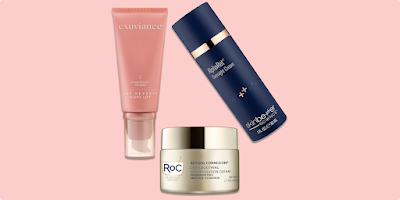
Can Hyaluronic Acid and Salicylic Acid be used together?
You can certainly use these two powerful ingredients together. In fact, many skin care experts explain how the combination of moisturizing hyaluronic acid with the pore-cleansing and exfoliating benefits of salicylic acid works. You’ll also find that because the two ingredients have different pH levels, you can rest assured that applying two layers of product won’t lead to irritation or imbalance, but rather a healthy, radiant complexion that’s plump, youthful, and perfectly clear.
However, this is just the tip of the iceberg when it comes to using hyaluronic acid and salicylic acid together. In today’s article, we’ll take a detailed look at what happens when these acids are used together. So let’s jump right in and learn more.
What Not to Mix with Salicylic Acid?
Salicylic acid is one of the most commonly used beta hydroxy acids in over-the-counter preparations. You’ll find this clever acid in different concentrations, and all are known for their high potency. However, you need to be careful when doing this to ensure that you don’t accidentally damage your skin. Therefore, it’s best not to mix salicylic acid with certain ingredients to avoid unwanted irritation or reactions. The main skincare ingredients that should not be mixed with salicylic acid are:
Retinol
Glycolic acid
Benzoyl peroxide
Vitamin C
If you mix these ingredients with salicylic acid, you will find that it can be too much for your skin. This can lead to imbalance and a host of different skin issues, including severe dryness, itching, redness, and rashes. If you want to know exactly what not to mix with salicylic acid, we have a dedicated blog post on the Beauty Insiders blog that can answer your questions.
Can I use salicylic acid with hyaluronic acid and niacinamide?
Yes, you absolutely can! Using all three ingredients together requires some organization. What I mean by this is that you need to know when is the best time to use each ingredient to get the most out of them. For example, choose an exfoliating toner that is rich in salicylic acid, as this can remove dead skin cells and unclog impurities and bacteria in the pores. Follow up with hyaluronic acid to moisturize the skin. Finally, you can use another serum or moisturizer that contains niacinamide, which can improve facial hydration and regulate sebum production for a balanced and healthy complexion.
If you still have questions about using salicylic acid, hyaluronic acid, and niacinamide together, read our blog post.
When should you use salicylic acid on a regular basis?
You’ll find salicylic acid in a number of different skincare products, including cleansers, exfoliating toners, serums, face oils, and moisturizers. When to use salicylic acid depends largely on the products you use that contain an effective BHA. Of course, remember to apply your skincare products in the correct order, starting with the thinnest and working your way up to the thickest.
My simple advice is to not use more than one product with salicylic acid, as this can cause your skin to become over-irritated and feel tight, dry, and uncomfortable. Remember: If you have concerns about using salicylic acid or a new skincare product in your routine, it’s best to consult your doctor or dermatologist.
Should I use salicylic acid or hyaluronic acid first?
If you want my advice, I recommend applying salicylic acid to your skin first. Ideally in the form of a cleansing or exfoliating growth cream, as this will remove unwanted residue, bacteria, impurities, and dead skin cells from the surface. You will also notice that any product you apply afterwards will be absorbed into the skin very quickly since you have cleared away any buildup or physical barrier on the skin.
Follow up with a hydrating serum containing hyaluronic acid to boost hydration for plump, radiant, and youthful skin. It will also soothe the skin and prevent dryness after using salicylic acid, which can easily strip the skin of oil.
Can hyaluronic acid be mixed with moisturizer?
Absolutely! In fact, you will find that mixing hyaluronic acid with your moisturizer allows your skin to reap the benefits of both ingredients. This is due to the hydrating properties of HA (hyaluronic acid), which ensures that every gram of water from the air around your face and from your skincare formula is absorbed and locked into the underlying layers.
When you mix hyaluronic acid with your moisturizer, you are simply ensuring that the HA is able to do its best work without any side effects. What I mean by side effects is the rare event that the hyaluronic acid you apply topically to your skin does not absorb water from the atmosphere or your skincare products, but instead absorbs water from the underlying layers of the skin, causing dryness and weakening the skin barrier, leaving it vulnerable to free radical damage.
Should I use a facial toner before applying hyaluronic acid?
Yes, absolutely! Especially if the toner contains an acid like salicylic acid. This is because salicylic acid is oil-soluble, which means it can penetrate deeper into the skin than other acids like glycolic and lactic acid. By penetrating deep into the pores, BHA can detoxify them, clearing out excess sebum, bacteria, and dirt. While this works well for skin clarity, it can also cause dryness, especially for those prone to sensitivity. Luckily, the hyaluronic acid applied afterwards can eliminate any signs of dryness and irritation, leaving skin clear, healthy, and balanced.
Follow us on Instagram for more expert skincare tips, advice, and information about new product launches. If you have any questions about skincare, reach out to me via DM.


